This site is part of various affiliate programs. Links may give us a small compensation for any purchases you make, at no additional cost to you. Please read the disclaimer policy for full details.
The best video cameras for hunting are:
- Sony FDR-AX53 (Overall Best Hunting Video Camera)
- Sony HDRCX405 (Best Video Camera for Hunting on a Budget)
- Panasonic Lumix G85 (Best 4K Video Camera for Filming Hunts)
- GoPro HERO11 (Best Action Camera for Hunting)
- Insta360 ONE X2 (Best Camera for Self Filming Hunts)
You want to record your hunting trips so you can have it as a memory to share with the family, or simply as a tool for learning and improving your skills, but in order to be able to record the process, obviously, you’ll need a decent camera.
Being out and about in the wilderness, you don’t want to sacrifice your smartphone’s battery because you might need it in an emergency situation. That is why a dedicated video camera for hunters is a better-suited tool for this job.
There are all sorts of quality cameras out there, but no camera can do everything, I know! You will likely have to make some compromises unless you have a very large budget, but this doesn’t mean that you will end up with a camera that you regret, unless you don’t do your research.
This article contains all of my best tips to help you find the best video camera for hunting for you, with suggestions depending on all budgets and types of wilderness adventure that you go on.
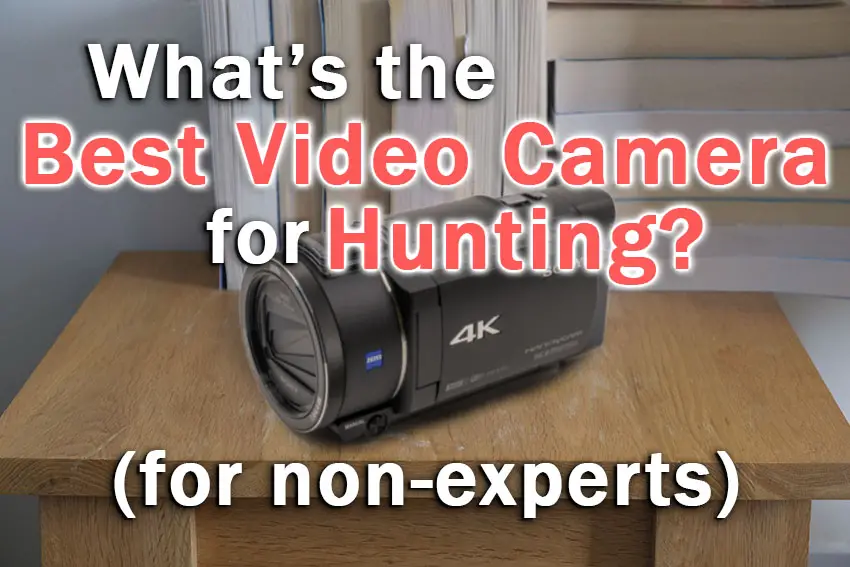
The Best Video Camera for Hunting
The Best Video Camera for Deer Hunting
- Records up to 4K video at 24/25 fps
- Nice and sharp Zeiss lens
- Great image stabilization
- Small form factor
- You can attach external analog and digital microphones
The Best Video Camera for Hunting on a Budget
The Best Video Camera for Hunting Under $500
- Fantastic long zoom for distant animals
- Easy to use
- Screen twists 270 degrees and is easy to see
- Has great optical and electronic image stabilizer
- Lightweight and cheap
The Best 4K Video Camera for Filming Hunts
Best Pro Camera
- One of the best video qualities
- Great low light capabilities
- Weather sealed and can survive in the wilderness as long as you
- Excellent autofocus so no missing a shot
- One of the strongest image stabilization systems
Comparison of the Best Video Cameras for Hunting
Video Camera | Max. Video Resolution | Has Image Stabilization? | Ideal because: | Check Price | |
[Best Video Camera for Hunting] | 4K / 25fps | Yes | You can take sharp videos of distant animals | ||
4K / 30fps | Yes | It has excellent video quality | |||
4K / 30fps | Yes | Very good low light video recording | |||
5.3K / 60 fps, 4K / 120 fps | Yes | It's easy to attach to clothing and use hands-free | |||
[Best Video Camera for Hunting on a Budget] | 1080p / 60fps | Yes | Very low price for its specs | ||
4K / 30fps & 1080p / 120fps | Yes | For professional quality videos | |||
4K / 30fps & 1080p / 120fps | Yes | Compact and very easy to use | |||
5.7K / 30fps 360 video | Yes | Creates 360-degree videos - perfect for the thick of the action | |||
1080p / 60fps | Yes | It's the cheapest camcorder suitable for hunting | |||
1080p / 30fps | No | A trail camera that you can also wear |
How to choose the Best Camera for Filming Hunts?
It is an indisputable fact that most of the cameras produced these days will do the job one way or another. Technology has come quite far in the past decade regarding video cameras. However, when you are choosing a tool for a certain job, you should be able to discern which tool is the best tool for the job. To do so, you should know what to look for.
Let’s go over some important features you should be aware of when choosing the best video camera for your hunting trips.
- Video Quality – the most important feature of every video camera is the video quality. Always look for sample footage on youtube (not from the manufacturer) and see whether you like the video quality that the camera outputs. Be aware that resolution doesn’t mean much nowadays. A 4K video on a cheap camera can look worse than a 1080p video on a good camera.
- Low Light Capabilities – When you are hunting, frequently, you’ll find yourself in low light conditions. If the camera can’t handle low light properly, it is useless for you. So when you check out sample footage to judge the camera’s video quality, make sure you look for sample footage in low-light conditions to see whether it performs well in that case.
- Sensor Size – roughly speaking, the sensor size (physical size, not the number of pixels) determines how the camera will handle low-light situations. Cameras with larger sensors will be able to capture more light and thus handle low light better.
Of course, sensor technology and age will affect this, but as a rule of thumb, sensor size is the biggest factor determining the camera’s low-light capabilities. - Lens – the lens is the intermediary between the camera sensor and the real world. It has the job of focusing light onto the sensor, and it is one of the most important factors determining what the camera sees, how much light it gets, and how sharp the image is. Lenses with smaller f/ number will let in more light, thus better low light performance.
The focal length, usually expressed in millimeters, determines how zoomed in the lens is. Fewer millimeters mean a wider field of view, and more millimeters mean a tighter field of view. When the lens focal length is expressed in 35mm sensor equivalent, a 24mm lens will be somewhat as wide as the standard smartphone camera, and 200mm will be akin to the magnification that you’d get on a 4x rifle scope. - Image Stabilization – being a hunter, you’d think that you have quite steady hands, but when it comes to holding a camera, there are no hands steady enough. Especially when you zoom in significantly. That is why image stabilization technology exists, and you shouldn’t get a camera without it nowadays, except if you want to invest in a gimbal to stabilize the entire camera instead, but this will set you back a significant sum.
- Weight – most consumer cameras are quite lightweight. At least when compared to a hunting rifle or a recurve bow which can weigh up to 10 pounds. But as with any equipment that finds its way into the bag, you want it as light as possible, so your backpack doesn’t weigh a metric ton.
- Ergonomics – just like any other tool, ergonomics is essential. If you can’t hold and operate the camera easily, it is useless to you. You’ll often find yourself in rough environments when you are hunting, and in that case, you shouldn’t struggle with operating or holding the camera.
At that point, it will become an annoyance, and it will end up in your backpack the entire trip. So make sure that the camera you are going for is easy to hold and operate. Consider that you might be wearing gloves. - Autofocus – if the camera doesn’t have a fixed focus lens (like GoPros, for example), then you’ll need to be aware of the camera’s focusing capabilities. Most cameras will focus just fine in daylight.
However in the dark, they might struggle to acquire focus or be unable to track focus. So if you hunt in low light conditions, make sure that you go for a camera with an autofocus system that can handle those conditions.
Reviews of the Best Hunting Video Cameras
Now that you have a general idea about what you should look for in a camera, let’s go over our top picks for video cameras for hunting.
1. Sony FDR-AX53 [Best Camcorder for Hunting]
Specifications:
- Sensor: 1/2.5” 8.29MP back-illuminated Exmor R CMOS Sensor
- Video Recording: 4K / 25fps
- Included Lens (35mm equivalent): 4.4-88mm ZEISS Vario-Sonnar T* (26.8-536.0mm)
- Stabilization: Balanced Optical SteadyShot w/ Intelligent Active mode (5-axis).
- Screen: 3” Xtra Fine LCD™ display. 90° opening and 270° turning angle.
- Weight: 18.87 oz /535 g (without battery).
Video Quality
The first thing you’ll notice about the FD-AX53 is the video quality. It is a camcorder capable of recording 4K video at up to 25fps. At that resolution with a sensor that small, you’d expect compromises in video quality, but the camera does really quite well. Thanks to the Vario Sonnar lens, the image is sharp and detailed, and the camera will handle low light quite well.
There is a low light mode, where the camera reduces the shutter speed to gather more light, and it works well. However, if you have fast motion in the dark, you might notice some smudging/smearing.
The only place where the camera falls short is in the color reproduction. Sadly, just like other Sony camcorders that aren’t intended for professional use, the colors aren’t quite true to life, with some washing out or oversaturating possible. This shoudn’t be too much of an issue for hunting videos though, as typically color doesn’t play a big part.
On a positive note, the Balanced Optical SteadyShot does the job quite well, providing a nice and stable image even on the telephoto end of the zoom range. Another positive note is that the lens can zoom in quite a lot. At 536mm, you are getting subjects in the frame as you would see them through a 12x rifle scope, give or take.
The autofocus is essentially a contrast detection autofocus, meaning it will do well when enough light is available. The efficiency and accuracy will reduce as the amount of light reduces. However, it will track faces and do it relatively reliably.
Ease of Use
The Sony AX53 is a small and relatively light camcorder that will fit in your palm. The form factor makes it easy to hold, even when using gloves. The small buttons might prove hard to press when using gloves.
It is not weather and moisture-sealed, meaning that dust and water can be an issue. If you pick a camera like this one, you’ll have to be careful about the surrounding conditions on your hunting trips.
The 3-inch flip screen is good enough to operate the camera and use it as a viewfinder, and it is touch-enabled. Of course, there is a viewfinder too, which you can use in the high sun if the screen is hard to see.
You can use the integrated microphone, which is okay, or you can attach an external microphone via the 3.5mm jack or the multi-interface hot shoe, where you can attach a Sony digital microphone.
Who is the Sony FDR-AX53 for?
If you are a hunter used to recording with a camcorder, this higher-end Sony camcorder is a great solution for you. It is a bit pricey, but it is packed full of features.
- Pros:
- Records up to 4K video at 24/25 fps.
- Nice and sharp Zeiss lens.
- Small form factor.
- It has great image stabilization.
- You can attach external analog and digital microphones.
- It has a timelapse feature.
- Cons:
- Colors can be weird and inconsistent.
- Expensive.
- No weather sealing.
2. Panasonic Lumix G85 [Best DSLR Camera for Hunting]
Specifications:
- Sensor: Micro Four Thirds 16MP Live MOS Sensor
- Video Recording: 4K / 30fps
- Included Lens (35mm equivalent): 12-60mm f/3.5.6 Power O.I.S (24-120mm)
- Stabilization: Image sensor shift type (5-axis / 5-stop), Dual I.S (with O.I.S lenses)
- Screen: Free-angle 3.0-inch TFT LCD monitor with static touch control.
- Weight: 17.8 oz /505 g (without lens).
Video Quality
The G85 uses a micro four-thirds sensor, which is significantly bigger than the ones used in the camcorders. That means you will be getting quite better video quality, especially when shooting in low-light scenarios. Of course, APS-C or Full Frame cameras will do even better, but this is a good middle ground.
The 4K video is excellent with this camera. Depending on the lens you are going to use, the sharpness will vary, but even with the kit lens, you’ll be getting very sharp footage with great color rendition and great low-light performance.
You’ll notice that the image stabilization is quite good, and it becomes even better if you use a lens with OIS. The G85 combines in-body stabilization with optical stabilization in the lens perfectly, compounding the effects to provide almost gimbal-like stabilization.
The autofocus is contrast based, which is a shame. This camera would benefit a lot from a phase detection autofocus, but the contrast detection does still work well. You’ll notice some hunting from the autofocus, but it snaps in focus quite quickly.
Ease of Use
This is a small form factor camera with interchangeable lenses. That means that you can control the field of view by using different lenses. For some users, this is a great feature. Others might find it a bit complicated. The kit lens is in the quite decent range going from 24mm to 120mm equivalent. So at the longest end, it will zoom in, similar to a 3x scope.
The 3-inch screen can be tilted and flipped so you can either see what you are filming or see yourself if you are pointing the camera toward you. That is excellent. The viewfinder also works well, especially useful during the day, when the display can be hard to see.
You’ll get decent audio from the built-in microphone, but if you want to, you can attach an external microphone and plug it in via the 3.5mm jack.
It is quite an ergonomic camera, even though it is small. You’ll be able to operate this camera with gloves that aren’t too thick, and if your gloves include padding that works with touch screens, then you’ll be able to use the touch functionality as well.
Another great thing about the Panasonic G85 is that it is weather sealed. Meaning that it should be able to handle rain and dusty environments. It can’t dive, though. To keep the camera weather sealed, you’ll have to use lenses that are weather sealed as well. Otherwise, you risk damaging the lens.
Who is the Panasonic G85 for?
If you want image quality that is better than the average camcorder and a camera that is simple to use, than the G85 with the kit lens is a great choice, especially for that price. Keep in mind that it is a great photo camera as well.
- Pros:
- Excellent video quality.
- Good low light capabilities.
- It has great image stabilization.
- It is weather sealed.
- The kit lens is very good.
- It has a timelapse feature.
- The autofocus is excellent.
- Cons:
- It is fully weather sealed only if you use a weather-sealed lens with it.
- A single battery will get you around 45 minutes of 4K recording.
3. Canon Vixia HF G50 [4K Camcorder for Hunting]
Specifications:
- Sensor: 1/2.3-inch CMOS sensor
- Video Recording: 4K / 30fps
- Included Lens (35mm equivalent): 3.67–73.4mm (Approx. 30.6–612mm with Dynamic IS On)
- Stabilization: Optical system (lens shift) + electronic stabilization.
- Screen: 3.0-inch LCD, Capacitive Touch Panel.
- Weight: 25.92 oz /735g (without battery).
Video Quality
The Canon Vixia HF G50 probably has the best overall video quality of all camcorders on this list. The Sony AX53 is a close contender, but Canon manages to keep the colors rich and true to life, unlike the Sony. The 4K footage is nice and sharp, and it handles low light well for a camera with a small sensor. Compared to the Sony, the video from the HF G50 is sharper, better looking, and handles low light better.
The image stabilization is great. It handles the telephoto end of the 20x zoom lens quite well. You’ll notice that the lens produces a very sharp-looking video, with just a slight sharpness falloff.
Canon has pioneered on-sensor phase detection autofocus, and it shows. The camera uses a hybrid autofocus which combines phase detection with contrast detection, enabling the camera to snap into focus quite quickly and keep it accurate even in low light conditions. It can also track faces quite reliably.
Ease of Use
Being a classic camcorder form factor, the Canon Vixia HF G50 is quite easy and ergonomic to use. Every important control is at the tip of your fingers. Being a camcorder form factor device means that you can easily keep it stable in your hand, paired with image stabilization, which will get you quite smooth footage.
The flip screen is a regular 3-inch touchscreen panel that is decently visible during the daytime. You can always use the viewfinder if the sun overpowers the LCD.
Canon is known for a well-executed and intuitive menu system, which means you’ll have no issues finding and changing every setting you can think of.
Who is the Canon Vixia HF G50 for?
If you are a hunter used to recording with a camcorder and you want as few compromises as possible, the Canon Vixia HF G50 is a great choice. It is a bit pricey, but it is packed full of features. The color reproduction and video quality justify the price tag though.
- Pros:
- Records up to 4K video at 24/25 fps.
- Nice and sharp Zeiss lens.
- Great color rendition.
- Small form factor.
- It has great image stabilization.
- You can attach an external microphone.
- It has a timelapse feature.
- Dual SD card slots.
- Cons:
- Expensive.
- No weather sealing.
4. GoPro HERO11 Black [Best GoPro Camera for Hunting]
Specifications:
- Sensor: 1/1.9”
- Video Recording: 5.3K / 60 fps, 4K / 120 fps
- Included Lens (35mm equivalent): fixed 148°, with an even wider lens accessory available, increasing it to 158°
- Stabilization: HyperSmooth 5.0 Video Stabilization.
- Screen: 2.27-inch LCD fixed LCD touchscreen.
- Weight: 154 g / 0.35 lbs
Video Quality
Back when they came out, GoPros weren’t known for their video quality. It was obvious that you would be sacrificing video quality for the small and durable form factor. Nowadays, GoPros have improved significantly in the video quality department while still keeping the small, durable form factor.
You can shoot up to 5.3K video at 60fps or a whopping 120fps in 4K, which is quite excellent. The video quality does suffer a bit in low light, but it is still quite decent. Considering the sensor size, the video quality in a low-light situation is better than expected. During daylight, the camera produces excellent video quality with decent color rendition. They are better than the Sony AX53 but not even close to the Canon HF G50.
Being an action cam, you won’t find optical image stabilization. Moving parts in a durable camera are a bad idea. That being said, the camera utilizes electronic image stabilization called HyperSmooth 5.0. Essentially, there are gyroscopes and accelerometers inside the camera, and the data from those is used to stabilize the video footage. That hardware and software magic produces one of the most stable videos on the market, period.
There is no autofocus, meaning that the lens is a fixed focus and fixed focal length. There are software ways to change the focal length by cropping in, but you won’t get extreme zoom features like with the camcorders.
Ease of Use
The GoPro is designed to do pretty much everything for you. You have manual controls if you want them, but the auto modes will handle pretty much everything you throw at it. Just hit record, and you are set to go. Even though the screen is tiny, it is touch-enabled, and the menu items are large enough, so the operation is not that hard.
Being a tiny little camera, it is not intended for you to hold it in your hand all the time. That is where the GoPro accessories come in handy. You can mount it pretty much everywhere. You can mount it on your helmet (if you wear one), or on your chest via a chest mount, on the backpack strap, on your rifle, and so forth. Literally, the sky is the limit.
Of course, being an action cam, it can take a beating, and you can use it underwater by up to 10 meters.
Who is the GoPro HERO11 Black for?
If you want a small, lightweight, and yet very powerful camera, and you are willing to sacrifice zoom, then the GoPro Hero 11 Black is the best action camera for hunting.
- Pros:
- Extremely high resolutions and framerates of 5.3K / 60 fps and 4K / 120 fps.
- Extremely efficient image stabilization.
- Very small and lightweight.
- Waterproof up to 10m.
- Plenty of accessories and kits available.
- It has a timelapse feature.
- Cons:
- Initial price isn’t that high, but the accessories can be expensive.
- Fixed wide-angle lens.
5. Sony HDRCX405 [Best Video Camera for Hunting Under $500]
Specifications:
- Sensor: 1/5.8” 2.29 MP back-illuminated Exmor R CMOS Sensor
- Video Recording: 1080p / 60fps
- Included Lens (35mm equivalent): 1.9-57.0mm Zeiss Vario Tessar (26.8-804.0mm)
- Stabilization: Optical SteadyShot.
- Screen: 2.7” 90° opening and 270° turning angle.
- Weight: 6.7 oz /190 g (without battery)
Video Quality
The HDRCX405 is a camera released back in 2015. Being a budget camcorder that is more than seven years old, you can expect the age and price bracket to affect the video quality. And they do, significantly.
All of the cameras that we reviewed thus far were capable of shooting 4K video, even more than 4K with the GoPro. The HDRCX405 is limited to 1080p video, with a maximum framerate of 60fps. For the money, however, the 1080p footage you’ll get isn’t that bad. The average smartphone will outperform it if you judge them on the wide-angle end. However, once you start zooming in, the 800mm lens will out zoom pretty much every smartphone on the market.
Even though the camera has a low light mode, called Low Lux Mode, the video quality in low light situations isn’t good. Color rendition is okay at best. You’ll notice the colors being a bit flat and looking a bit cheap.
The good thing is that the camera features decent optical image stabilization, which is necessary if you want usable video from the 800mm end of the lens.
You will notice that the autofocus is decent, even though it is a rudimentary contrast-detection type. It will track faces with an average hit rate.
Ease of Use
Even though it is a budget camcorder, it features a nice Carl Zeiss Vario Tessar lens with 30x zoom. The amount of zoom is equivalent to a 0.5x to 16x rifle scope. As with any zoom lens, the more you zoom in, the more sharpness you lose, which means that the already mediocre quality 1080p video will suffer some sharpness and detail loss on the longer end of the lens.
Ergonomically, the camera is a small, lightweight camcorder form factor device that fits well in hand. The LCD screen does the job, but it might be difficult to see during daylight.
Who is the Sony HDRCX405 for?
If you are a hunter on a budget, and you want pretty much one of the cheapest cameras on the market that isn’t of questionable origin, then the HDRCX405 is for you.
- Pros:
- Lightweight.
- Cheap.
- Great 30x zoom range reaching 800mm equivalent focal length on the long end.
- Easy to use.
- Has great optical and electronic image stabilizer.
- Screen twists 270 degrees.
- Cons:
- No external microphone input.
- Video limited to just 1080p.
- Poor low light capabilities by today’s standards.
- Poor sound quality.
- No weather sealing.
6. Sony A7III with 28-70mm Lens [Best Video Camera for Deer Hunting]
Specifications:
- Sensor: 35mm full-frame 24.2MP Exmor R CMOS sensor
- Video Recording: 4K / 30fps & 1080p / 120fps
- Included Lens (35mm equivalent): 28-70mm f/3.5-5.6 OSS
- Stabilization: In-body 5-axis image stabilization paired with Optical SteadyShot in the lens.
- Screen: 3” Tilting touchscreen.
- Weight: 33.33 oz / 945g
Video Quality
Even though the A7III was released back in 2018 and is now superseded by the A7IV, the A7III offers stellar video quality for the money. It will shoot up to 4K at 30fps, with incredible sharpness and color rendition. The 4K is so sharp due to the fact that the camera actually captures 6K signal and downscales it to 4K. With that technique, you are getting sharper than usual 4K footage.
If you need slow motion, the camera will shoot 120fps in 1080p, which will allow you to slow down the footage up to 5 times.
The camera offers a variety of codecs and picture styles for all your filmmaking needs, starting from S-Log, to HLG profiles to suit all your needs. If you are more into creative filmmaking, you’ll notice that you can push and pull the footage much more than what the camcorders or a GoPro will allow.
If you like to run and gun with the camera without using gimbals and such, you’ll be pleasantly surprised by the in-body image stabilization, in tandem with the optical steadyshot (optical image stabilization) in the included kit lens. Together they provide quite steady footage. It won’t replace a gimbal, but it is steady enough, so you don’t get seasick when watching it.
One of the most important benefits of the full-frame sensor is excellent low-light performance. Having a sensor that big allows for each pixel to be quite larger, and with that, it can gather more light. That all results in great low-light capabilities, and the camera will handle higher ISO’s like a champ. Having the ability to change the lens in low-light conditions, you can use a lens with a wider aperture to achieve even better low-light performance.
One of the most important selling points that the camera had when it was released was the powerful autofocus. It has on-sensor phase detection autofocus, which works in tandem with a contrast detection autofocus to achieve a very accurate autofocus system, even in low light conditions. It can track faces reliably, and it can focus on the eye of the subject for even more accurate autofocus.
Ease of Use
Being an interchangeable lens camera, you have a wide plethora of lenses that you can choose from. Sony has a great selection of lenses, but if your budget is a bit tighter or you require a specialty lens, there is excellent third-party support from the likes of Sigma, Tamron, Samyang, Tokina, and so forth.
Ergonomically, it is a relatively small camera for its class, and it is easy to handle. You have buttons and dials for all of the important settings, and the rest can be managed via the menu system.
The touchscreen flips up and down, so it aids in top-down or low-angle shots. But it doesn’t flip out to the side, meaning that you can’t see yourself if you are filming yourself. There are, however, mirrors that you can attach to the hot shoe so you can see the LCD screen if you wish to film yourself in a vlogging setup.
You can attach an external microphone via the 3.5mm jack or an external digital microphone via the multi-accessory hot shoe.
Moreover, the camera is dust and moisture-resistant, but it is not sealed. Meaning that it will stop some dust and moisture in the air, but it can’t take on heavy rain.
One thing that might be a pet peeve for some people is that Sony doesn’t include a battery charger in the box. Meaning that if you want to charge the battery, you will have to use your phone charger and charge it via the camera or purchase the charger separately. This is a tough situation if you are using more than one battery.
Bear in mind that this is a professional camera, meaning that to make the most out of it, you will need to get out of the auto modes.
Who is the Sony A7III for?
If you are a hunter that requires the best video quality and the flexibility that a filmmaker would need, then the A7III is a great choice for you.
- Pros:
- Excellent video quality.
- Excellent low-light capabilities.
- Interchangeable lenses.
- You can use external microphones.
- Great in-body stabilization.
- The kit lens has optical stabilization.
- Great autofocus with face and eye tracking.
- Cons:
- No weather sealing.
- Quite expensive.
- Battery must be charged in-camera.
7. Sony ZV-E10 [Compact Video Camera for Hunting]
Specifications:
- Sensor: APS-C 24.2MP Exmor CMOS sensor
- Video Recording: 4K / 30fps & 1080p / 120fps
- Included Lens (35mm equivalent): 16-50mm f/3.5-5.6 OSS Power Zoom (24-75mm equivalent)
- Stabilization: In-body 5-axis image stabilization paired with Optical SteadyShot in the lens.
- Screen: 3” Tilting and flipping touchscreen.
- Weight: 16.19 oz / 459g
Video Quality
Unlike the A7III, the ZV-E10 is geared towards enthusiasts and vloggers more. That doesn’t mean that the video quality is bad. It just means that it is more geared towards being used in auto modes instead of full manual modes. You do have the full manual modes if you need them, however.
The 4K video is downsampled from a 6K stream, meaning that it will be quite sharp and crisp. Just like the A7III, you can shoot 120fps in 1080p for 5x slow motion. The APS-C sensor handles low light quite well. Not as well as the A7III, but much better than any of the camcorders.
In general, the video quality is slightly worse than the A7III due to the smaller sensor, but it is still much better than anything else on this list thus far. That being said, the price point reflects the video quality much better than the A7III.
Just like the A7III, the ZV-E10 has excellent autofocus. It will track faces, and it will find the eye and focus on that as well. It has a neat feature where you can photograph a person and register their face, so the camera will prioritize that face when it has to pick a face to focus on.
Again, just like the A7III, it has in-body image stabilization, which works well coupled with an OSS lens. It will remove a lot of the camera shake, making for nice and smooth videos.
Ease of Use
The ZV-E10 is a compact mirrorless camera mainly intended for vloggers. Meaning that it is quite portable and it fits in the palm of your hand. Don’t let the size fool you, though. It is a small powerhouse of a camera.
Originally, the ZV line was known for it is fixed lens compact camera system, but in this case, you can change the lenses with any Sony E mount lens. That gives you plenty of flexibility and plenty of options to tailor the camera to your needs.
The included lens is quite good, and it will provide you with a wide-angle to medium telephoto range. The telephoto end of the lens will provide a field of view akin to a 1.5x rifle scope.
You’ll notice that the screen is a nice and bright 3-inch tilt and flip screen. You can set it in pretty much any position you need, which is great. It is touch-enabled, so that is a plus.
Audio-wise, the camera is a great performer. It has a built-in stereo microphone with large capsules, which records audio quite well. You can get an optional windscreen to cut some wind noise. Other than the wind noise pickup, the microphone is great, and it will do the job if you want a small setup. If you want better audio, you can attach an external microphone via a 3.5mm jack or the multi-interface hot shoe.
Bear in mind that the camera isn’t weather-sealed, so you’ll have to be careful when using it in tough weather conditions.
Who is the Sony ZV-E10 for?
If you want a cheaper alternative to the A7III that is more compact and yet still have pretty awesome video capabilities, then this camera is for you. No doubt about it.
- Pros:
- Excellent video quality.
- Excellent low-light capabilities.
- Interchangeable lenses.
- You can use external microphones.
- Great in-body stabilization.
- The kit lens has optical stabilization.
- Great autofocus with face and eye tracking.
- Cons:
- No weather sealing.
8. Insta 360 ONE X2 [Best Camera for Self Filming Hunts]
Specifications:
- Sensor: Dual 1/2.3” sensors
- Video Recording: 5.7K / 30fps 360 video
- Included Lens (35mm equivalent): 2x 7.2mm equivalent lenses
- Stabilization: 6 axis gyroscope.
- Screen: 2” Circular Touchscreen.
- Weight: 5.25 oz / 149 g
Video Quality
Thus far, we have been looking at traditional cameras in the sense of what they can record. The Insta 360 ONE X2 is a bit different in that regard. This camera records everything. It has a 360-degree field of view, meaning that it records everything around it, left and right, top and bottom. In other words, it is a set-it-and-forget-it kind of camera. Just mount it on a helmet or on your backpack, and let it record the world around you.
It achieves this by utilizing two sensors with an extremely wide field of view, and it stitches those two videos into one 360-degree video that you can frame traditionally later in the software they provide. Having two small sensors means that low light performance isn’t the best, but in terms of image quality, it will outperform the cheap Sony HDRCX240 and HDRCX405.
At the end of the day, you are getting a 5.7k 360dgree video. When you crop to a normal field of view, you are left with less than that, sometimes significantly less. Depending on how much you crop and how you frame your shots. If you decide that you are too lazy to frame your videos afterward and you prefer to use it as a regular camera, then you are getting a 1440p video at a maximum of 50fps.
The lenses being that wide, won’t benefit from autofocus much, so for the sake of durability and simplicity, the lens has fixed focus and fixed apertures.
Having a field of view that wide, a complex accelerometer and gyroscope array, and an exceptionally well-designed image stabilization algorithm means that this camera produces footage that is buttery smooth. You won’t need a gimbal or other means of stabilizing the camera.
As a cool gimmick, if you use the camera with the invisible stick, it is digitally erased from the footage in the camera, so the footage looks as if it was recorded by a camera drone that follows you around.
Ease of Use
Being a 360 camera means that it is really straightforward to use. You don’t have to worry about framing or stabilizing the camera, nor do you have to worry about the settings too much. It is designed to figure things out by itself as much as possible. So all you need to do is press record and move on with your day. You can do the framing later in their app.
It is very lightweight and waterproof, so you don’t have to worry about it at all. There are optional cases that will increase the ruggedness even further if you need that. It will fit in your pocket since it is smaller than the regular smartphone (a bit thicker, although), so carrying it around when you don’t use it isn’t such a hassle.
You will notice that the microphones are quite cool since they record everything around the camera as well. The sound recorded from the microphones is okay, not bad, but not the best either. It will do the job, though.
There is a screen that is mainly used for settings, but it is a small circular thing reminiscent of a smartwatch. It is a bit unresponsive touch panel, but it will do the job since there aren’t many things you need to set up anyway.
Who is the Insta 360 ONE X2 for?
If you are a hunter who doesn’t want to bother with the camera while hunting and is willing to frame the shot at home on an app, then this camera is an excellent choice for you. Having the 360-degree field of view might be cool as a learning tool as well since you can look at the footage afterward and see if you missed something.
- Pros:
- 360 degrees field of view.
- Video is stitched in camera.
- 5.7K at 30fps resolution when in 360 mode.
- Waterproof.
- Excellent image stabilization.
- Small and compact.
- Well priced for what it offers.
- Cons:
- In regular mode, the resolution is limited to 1440p.
- Doesn’t handle low light that well.
- Microphones can be better.
9. Sony HDRCX240 [Budget Hunting Video Camera]
Specifications:
- Sensor: 1/5.8” 2.29 MP back-illuminated Exmor R CMOS Sensor
- Video Recording: 1080p / 60fps
- Included Lens (35mm equivalent): 2.1-57.0mm Zeiss Vario Tessar (29.8-804.0mm)
- Stabilization: Electrical SteadyShot image stabilization with Active mode.
- Screen: 2.7” 90° opening and 270° turning angle.
- Weight: 6.7 oz /190 g (without battery)
Video Quality
If you take the HDRCX405 apart, you’ll notice that they share the same sensor with the HDRCX240, so video quality wise, you’ll be getting the same thing with either of these cameras. There is a slight variation in the colors, but nothing too spectacular. For all intents and purposes, it is the same video quality.
The highest resolution you can record is still 1080p at 60fps.
Autofocus is still the same basic contrast detection autofocus and the same rudimentary face detection. Image stabilization, on the other hand, differs. In this case, you are getting just electronic image stabilization, meaning that you lose some image quality in order to get more stable footage.
All in all, video quality-wise, it is as rudimentary as it gets. A simple, plain, point-and-shoot camcorder that will get the job done as long as the conditions aren’t too tricky.
Ease of Use
This camera uses a Carl Zeiss lens, just like the HDRCX405. But this one doesn’t get as wide as the HDRCX405 and lacks the optical image stabilization in the lens. On the other hand, the maximum zoom is still the ridiculous 804mm equivalent.
You get the same 2.7inch screen that can be turned in pretty much any direction, and it is still a sub 200g camera. Meaning that it is a small and lightweight camera that is easy to handle. Just don’t get it wet since it is not weather-sealed by any means.
Who is the Sony HDRCX240 for?
If you are a hunter on a budget and you want an even simpler and cheaper camera than the Sony HDRCX405, then the Sony HDRCX240 is for you.
- Pros:
- Lightweight.
- Cheap.
- Great 30x zoom range reaching 800mm equivalent focal length on the long end.
- Easy to use.
- Has a great electronic image stabilizer.
- Screen twists 270 degrees.
- Cons:
- Video limited to just 1080p.
- Poor low light capabilities by today’s standards.
- No optical image stabilizer.
- No weather sealing.
10. BOBLOV A22 [Trail Camera for Hunting]
Specifications:
- Sensor: 1/5.8” 2.29 MP back-illuminated Exmor R CMOS Sensor
- Video Recording: 1080p / 30fps
- Included Lens (35mm equivalent): 160 degrees angle of view
- Stabilization: None.
- Screen: 1.3” fixed LCD screen.
- Weight: 2.8.7 oz /80 g (without battery)
Video Quality
This camera aims to do what the police body cameras do. However, the video quality is not up to par with today’s standards. It seems it uses a webcam sensor, and it has been fit in a pocketable body with a respectable battery size.
Don’t get us wrong, you will get a video out of it, but it will be used to document a trip more than showcase it. It will get you by, and that is the best it can do. Luckily it is cheap, so it has that going on for it.
The lens is a fixed 160-degree field of view lens with fixed focus and no image stabilization. So brace yourself for a shaky mess. At least you can rotate the lens 180 degrees, so you can record behind the camera or in front of the camera if you want to.
It’s not quite a thermal camera for hunting, but it does feature IR LEDs to aid low light recording. The range of those LED’s isn’t too big, so don’t expect to see further than 2-3 meters in the dark though.
Ease of Use
It is a very simple camera. It is designed to be clipped on a shirt pocket or a backpack strap and to be a set-it-and-forget-it type of device. It isn’t much you can set on this camera besides whether to record video or audio, whether take a photo or turn on the IR LEDs for low-light use.
The built-in battery should last up to 10 hours with a regular recording (without IR or screen on), which is great. It takes 3 hours to recharge it. On the other hand, at least it has an LCD screen, a tiny one but an LCD nonetheless. You can use it to preview your shots or frame them.
Don’t expect to use this camera in the rain, as there is no weather sealing.
Who is the BOBLOV A22 for?
If you are a hunter that can’t afford an Insta 360 camera and you need a camera that can be operated without taking up a hand, then the BOBLOV A22 will get you by.
- Pros:
- Very small and lightweight.
- The lens can be rotated 180 degrees.
- Very affordable.
- It can record for a long time.
- IR LED’s for low light vision.
- Cons:
- Video quality looks like a cheap webcam.
- No weather sealing.
- No image stabilization.
- 1.3” LCD is tiny.
Final Thoughts on the Best Video Camera for Hunters
There is no perfect camera for hunting. The choice will be entirely decided by your needs and your budget. Generally, the cameras that offer the best image quality tend to be the most expensive and the bulkiest of them all. On the other hand, the smaller the cameras get, the more optical/sensor sacrifices are being made.
All in all, there is always a camera that is right for you. Hopefully, this list pointed you to a camera that works for you, or at least in the general direction.
The Best Video Camera for Deer Hunting
- Records up to 4K video at 24/25 fps
- Nice and sharp Zeiss lens
- Great image stabilization
- Small form factor
- You can attach external analog and digital microphones
Read More:
What’s the best 85mm lens for Canon?
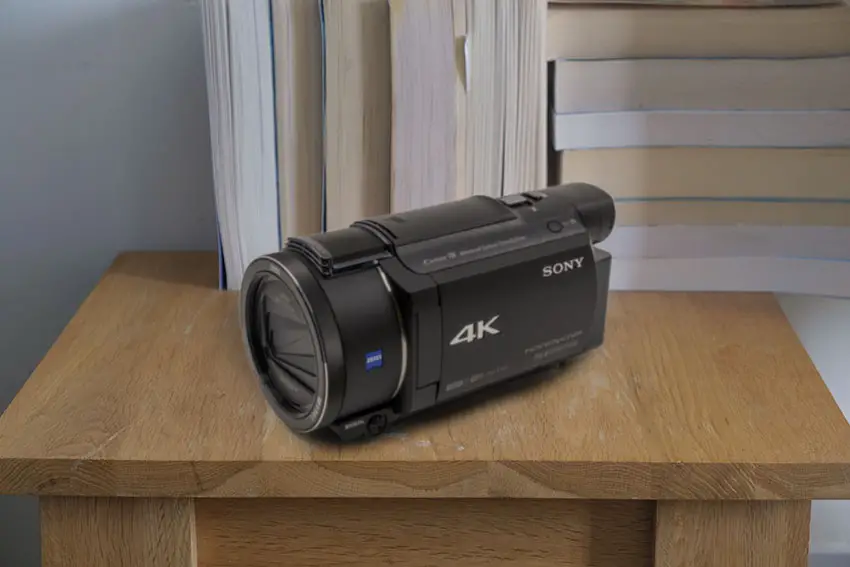
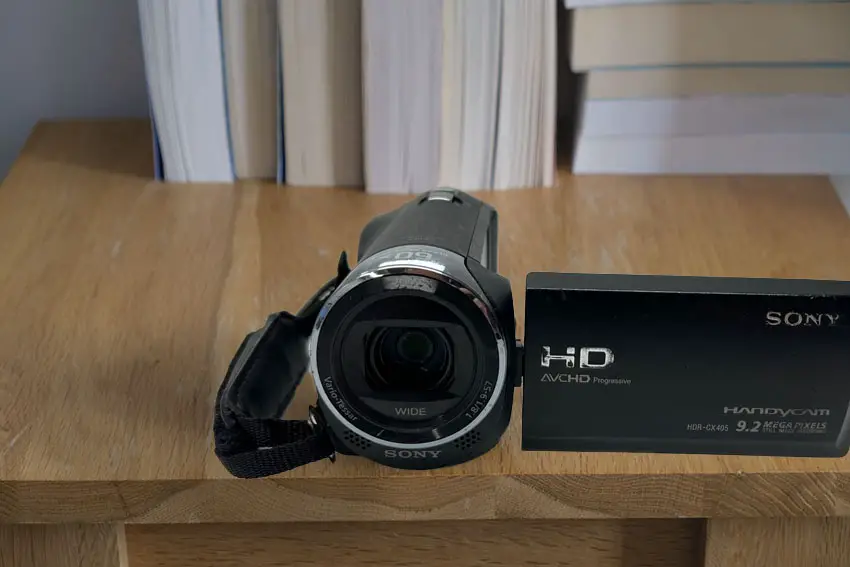
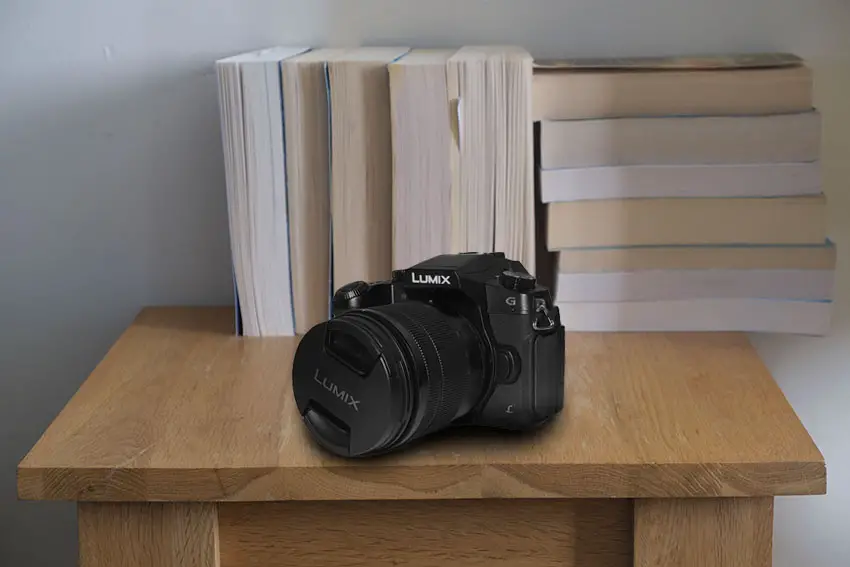


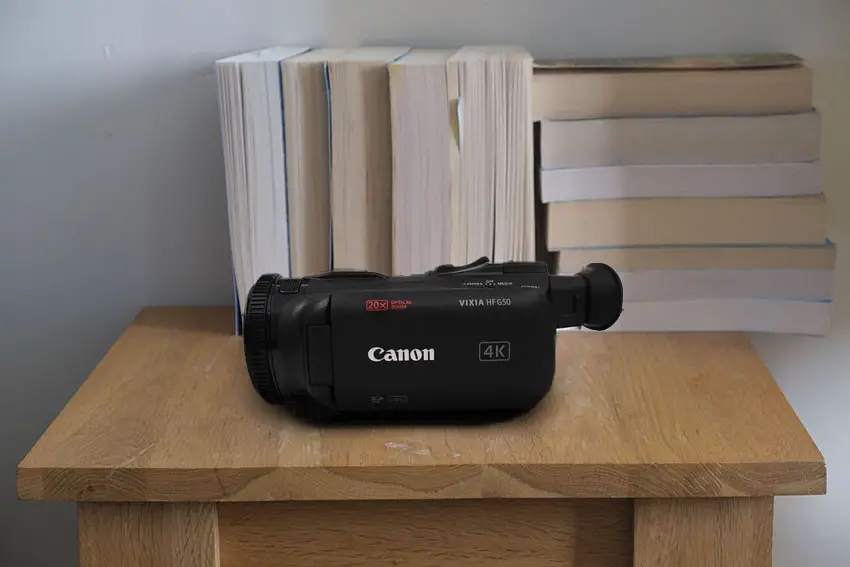
![GoPro HERO11 Black [Best GoPro Camera for Hunting]](http://www.lapseoftheshutter.com/wp-content/uploads/2022/10/gopro-hero11-timelapse-camera.jpg)

![Sony A7III with 28-70mm Lens [Best Video Camera for Deer Hunting]](http://www.lapseoftheshutter.com/wp-content/uploads/2022/10/Sony-A7III.jpg)
![Sony ZV-E10 [Compact Video Camera for Hunting]](http://www.lapseoftheshutter.com/wp-content/uploads/2022/11/Sony-ZV-E10.jpg)
![Insta 360 ONE X2 [Best Camera for Self Filming Hunts]](http://www.lapseoftheshutter.com/wp-content/uploads/2022/10/Insta-360-ONE-X2.jpg)
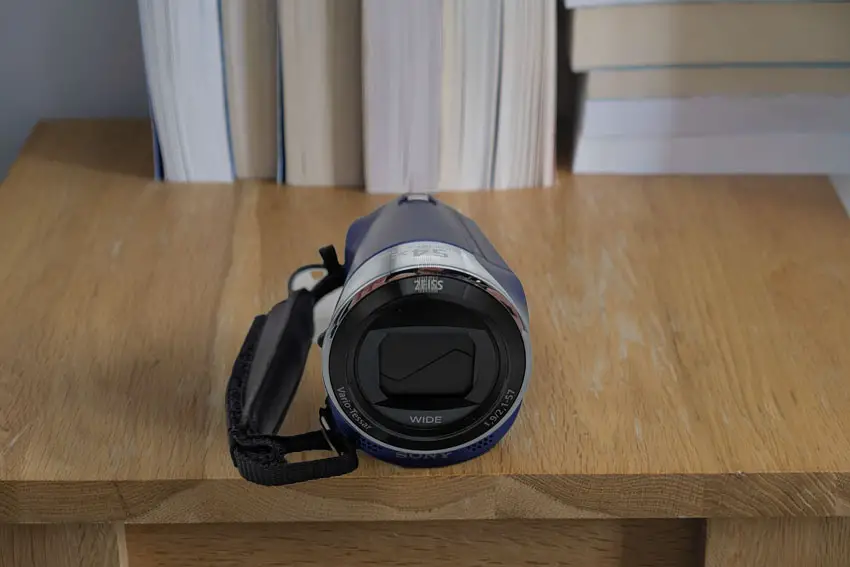
![BOBLOV A22 [Trail Camera for Hunting]](http://www.lapseoftheshutter.com/wp-content/uploads/2022/11/BOBLOV-A22.jpg)

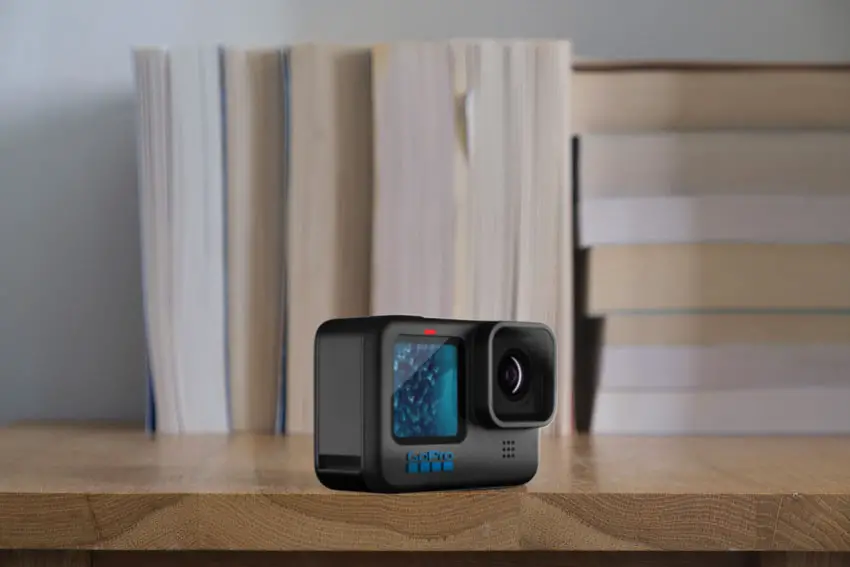
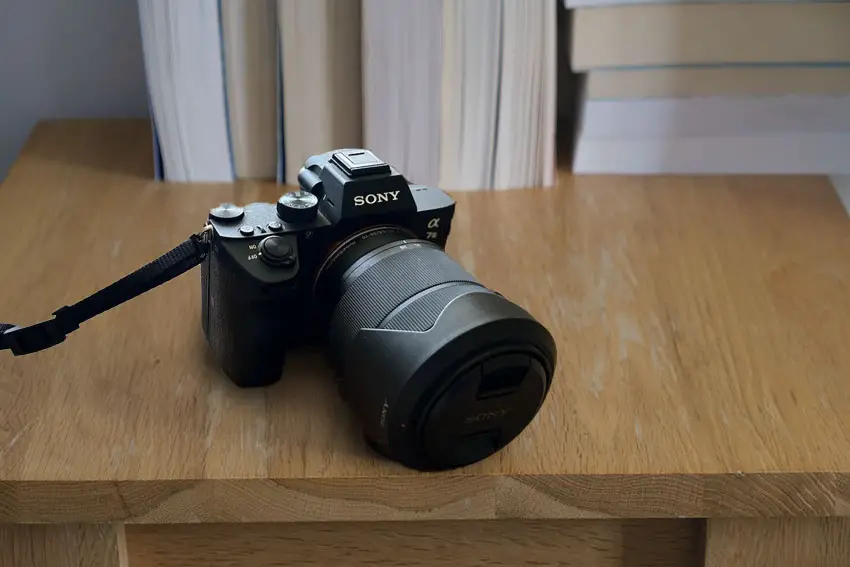
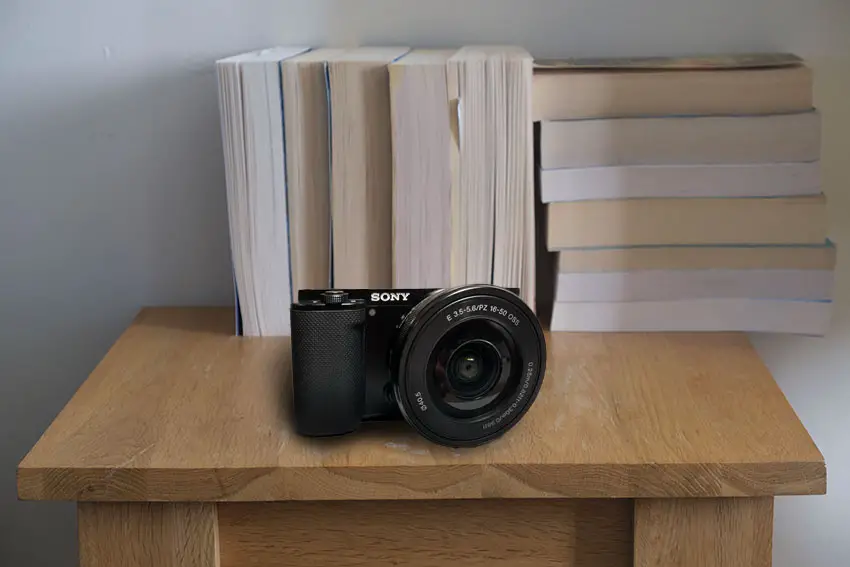
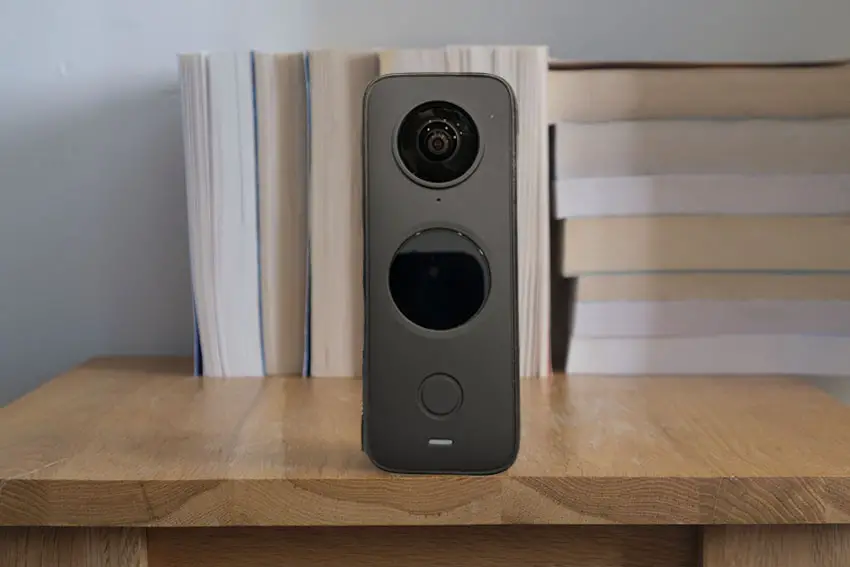

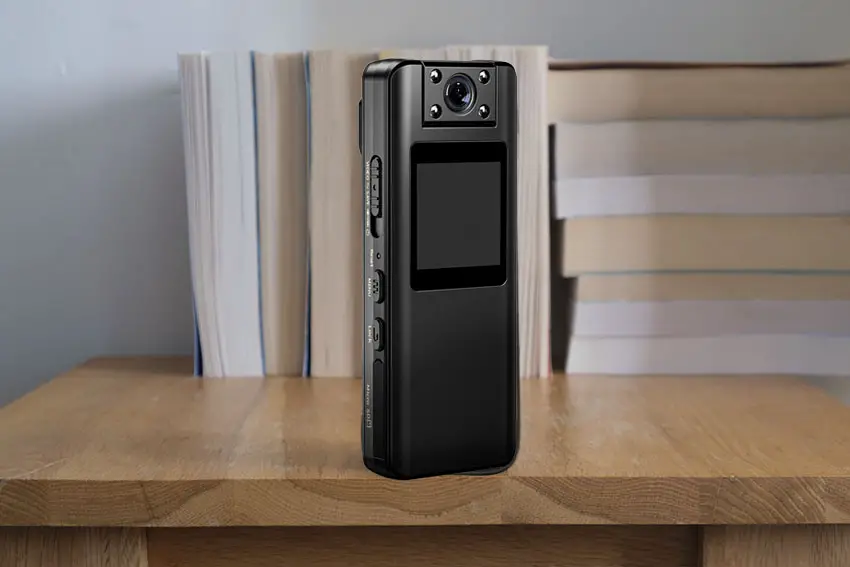
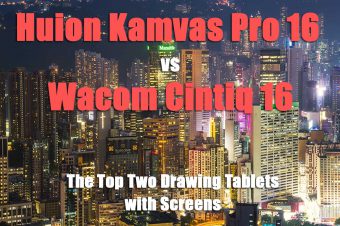
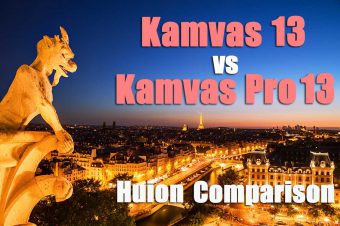
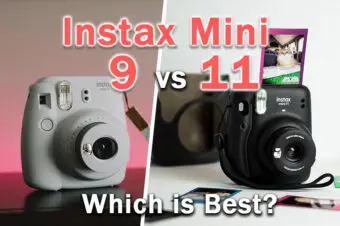
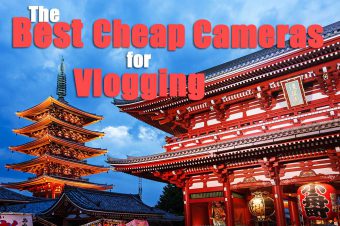
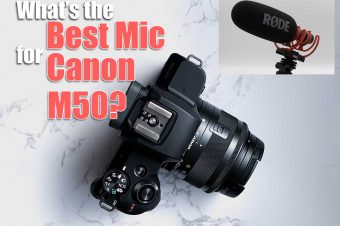

Leave a Reply